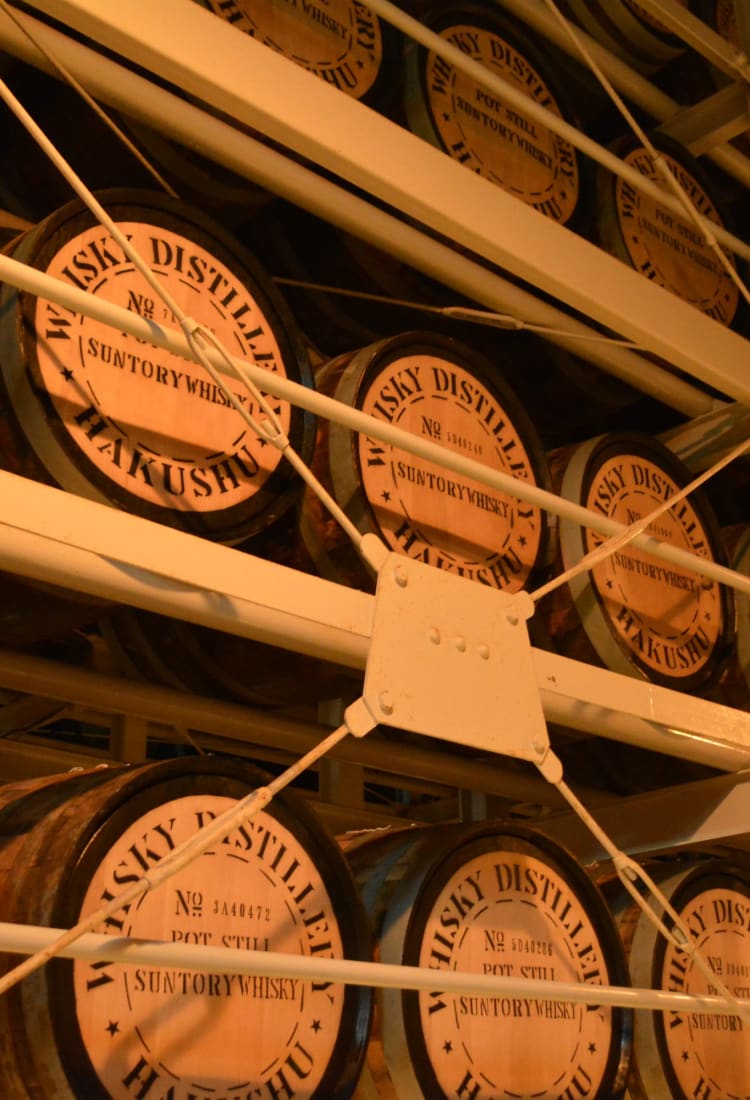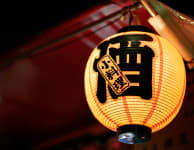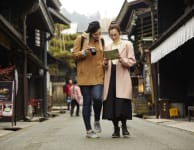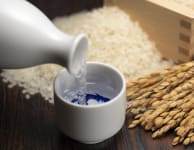Japanese whisky is an old tradition that gained worldwide attention in early 2000's
Commercial production of whisky in Japan began in 1924, a few years after Masataka Taketsuru returned from Scotland, where he had learned distilling techniques. Shinjiro Torii of Kotobukiya, which later became Suntory, hired Masataka to build Japan's first whisky distillery to produce whisky for the Japanese people. Japanese whisky thrived as a mostly domestic phenomenon, but in 2003 Yamazaki 12 Years Old won gold at the ISC (International Spirits Challenge). The momentum continued, with Suntory produced Yamazaki whisky earning the title of World Whisky of the Year in Jim Murray's Whisky Bible 2015. With that, a new internationally renowned whisky culture was born.
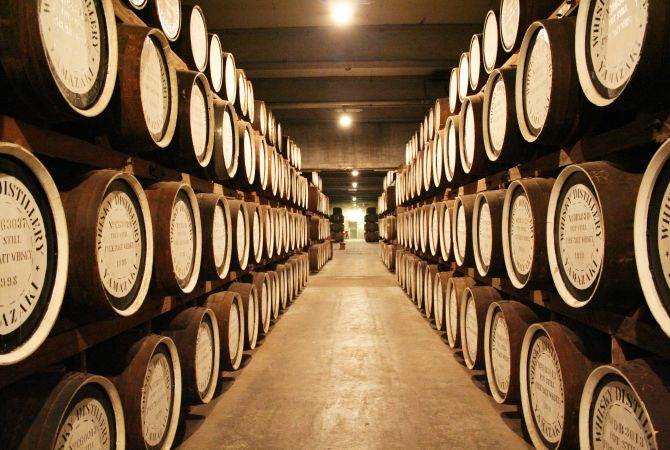

When a Japanese whisky won the 2015 World Whisky of the Year title, it caught the world's attention
Malted Barley alone does not a Japanese Whisky Make
Quality Water: The town of Yamazaki was once referenced in an ancient poem for its crystal-clear mineral waters that enchanted legendary tea master Sen no Rikyu. In 1923, Shinjiro Torii opened Japan's first distillery in Yamazaki.
Climate: Three rivers converge near Yamazaki creating nearly year-round thick mists. The shifting temperatures combined with the high humidity create the perfect environment for whisky maturation.
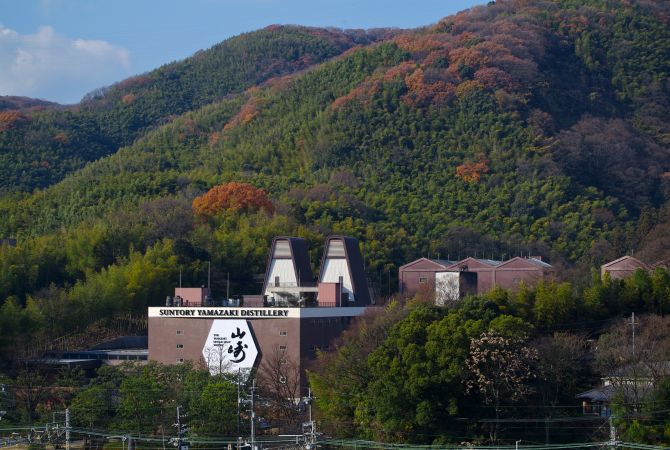

Yamazaki and Nikka are two of the biggest names in Japanese whisky
The big names in Japanese Whisky
In 1899, Shinjiro Torii founded Torii Shoten which would later become Suntory. He dreamt of a whisky-loving Japan. After World War I, Torii met Masataka Taketsuru. Taketsuru had just returned to Japan with his Scottish wife Jessie Roberta Cowan from the University of Glasgow and elsewhere, where he studied chemistry and scotch production. In 1923, Torii and Taketsuru founded Japan's first malt whisky distillery in Yamazaki. Six years later, they released Suntory White Label, Japan's first genuine whisky.
Suntory
Suntory Yamazaki distillery is located in Yamazaki, outside of Osaka. Yamazaki is one of three distilleries managed by Suntory in Japan, the others being Chita and Hakushu. It was the Yamazaki Single Malt Sherry Cask 2013 that took home the title of World's Best Whisky in 2015 and turned heads worldwide. This silky smooth, fragrant whisky is less peaty than most and resembles a Lowland scotch.
Nikka
After Masataka Taketsuru left Suntory he decided to open his own distillery modeled after the distilleries of Scotland. In 1934, he broke ground in the cold northern regions of Hokkaido and founded Dai Nihon Kaju, which was later renamed Nikka. Today, Nikka operates out of a second distillery as well. The Nikka Taketsuru Pure Malt is a blend of single malts from both distilleries.
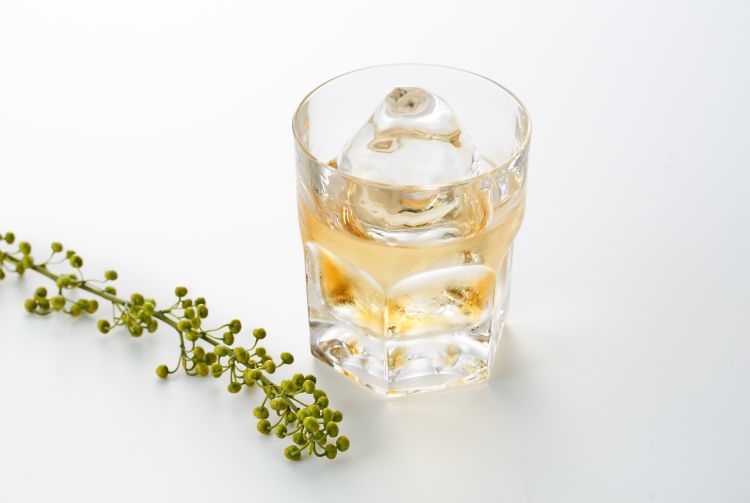
There is a broad spectrum of Japanese whiskies on the market
Respected at home, relatively unknown abroad
Not all Japanese whiskies are top-rank award winners. Some excellent, lesser-known offerings are available in Japan. For a refined and time-tested Japanese whisky, try a Yoichi Single Malt. Kirin Whisky Fuji Sanroku is an excellent, alcohol-forward whisky that is great for highballs in summer. It is unique among Japanese whiskies as its aroma and flavors are similar to that of bourbon. For a younger, non-age-statement whisky, try Akashi White Oak Single Malt. It has a strong aroma of oak and a punchy finish that calms down after a bit of time breathing in the glass.
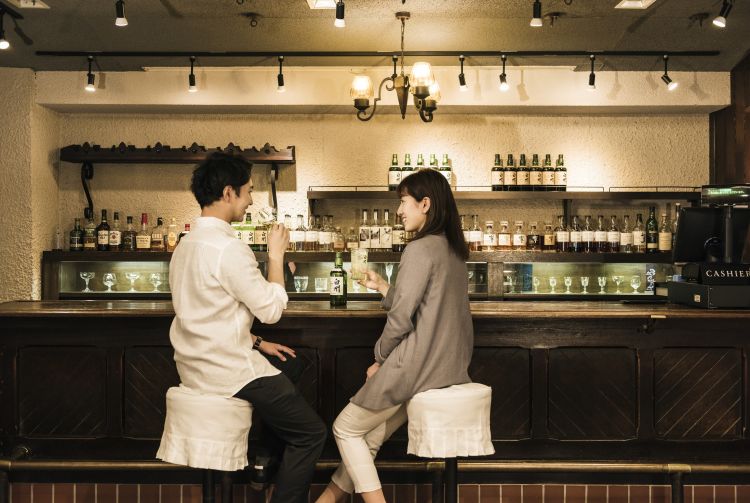
Most distilleries offer tours and the opportunity to sample
Taste History at a Japanese Distillery
Japan whisky distilleries are generally open to the public at certain times, and the major distilleries have gift shops. A distillery tour is a great way to learn about and try some Japanese whisky. The major distilleries all offer tours that you can find more information about on their websites. Please note that most tours are not conducted in English. Plan well ahead, as even small distillery tours book out far in advance.
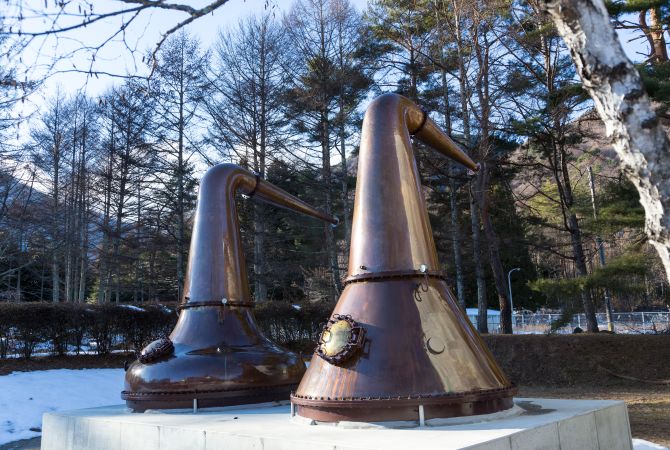

The Mars Shinshu distillery is Japan's highest altitude distillery
The Yamazaki distillery tour is well-known. Tours have audio guides in English, Chinese, and French, and include tastings. The Yoichi distillery in Hokkaido offers daily tours in Japanese, and an app for smartphones can be used for multilingual information. Tours during winter may be canceled due to heavy snow. The lesser-known Mars Shinshu distillery is Japan's highest altitude distillery, located in the Southern Alps. The Hombo clan has been distilling since 1949. They offer a tour that includes a tasting. Tours are in Japanese, but the experience is worth it regardless. Visit the website to make a booking via email.
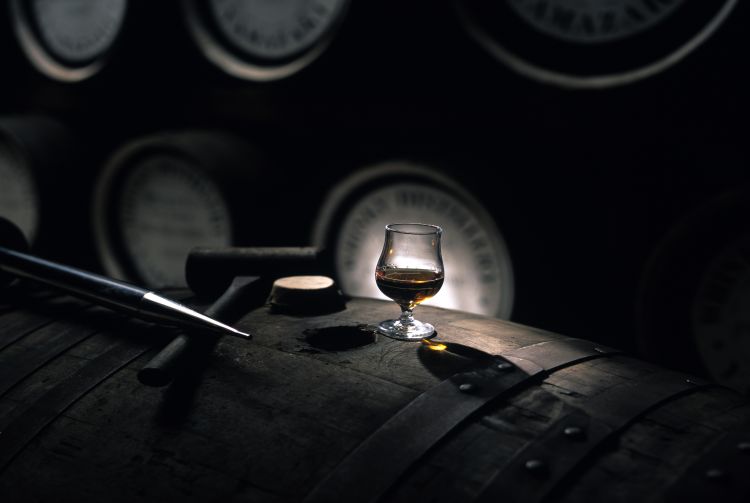
Japanese whisky can be found across the country
Where to drink Japanese Whisky
You can find Japanese whisky all over the country. Japanese hotels often feature quiet bars with plenty of Japanese whisky in stock. Visit any izakaya to try a highball or other Japanese whisky cocktails. Hole-in-the-wall bars all over the country pride themselves on their whisky lineup and are a great place to build your taste profile.
The Suntory lineup—Hibiki, Yamazaki, Chita and Hakushu, and others—is a delicate balancing act of aromas. These are best enjoyed neat or on the rocks. Japanese bartenders take pride in their ice carving abilities and will serve these varieties with only the best ice cubes. This prevents water from melting into your glass.
The lesser-known Japanese whiskies may not have all the awards of the Suntory lineup but there are many excellent options. The most common combo ordered at izakaya across Japan is a highball and karaage fried chicken. The hot, battered chicken pairs wonderfully with a dry, fizzy highball. Go with a simple Suntory Kaku or Nikka whisky. Most restaurants in the major cities will carry one or the other. These simple, refreshing drinks are a must for the hot Japanese summers.
The latest information may differ, so please check the official website




















































